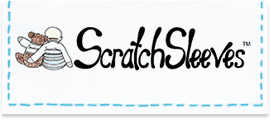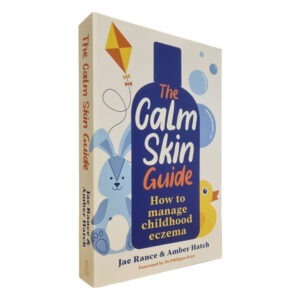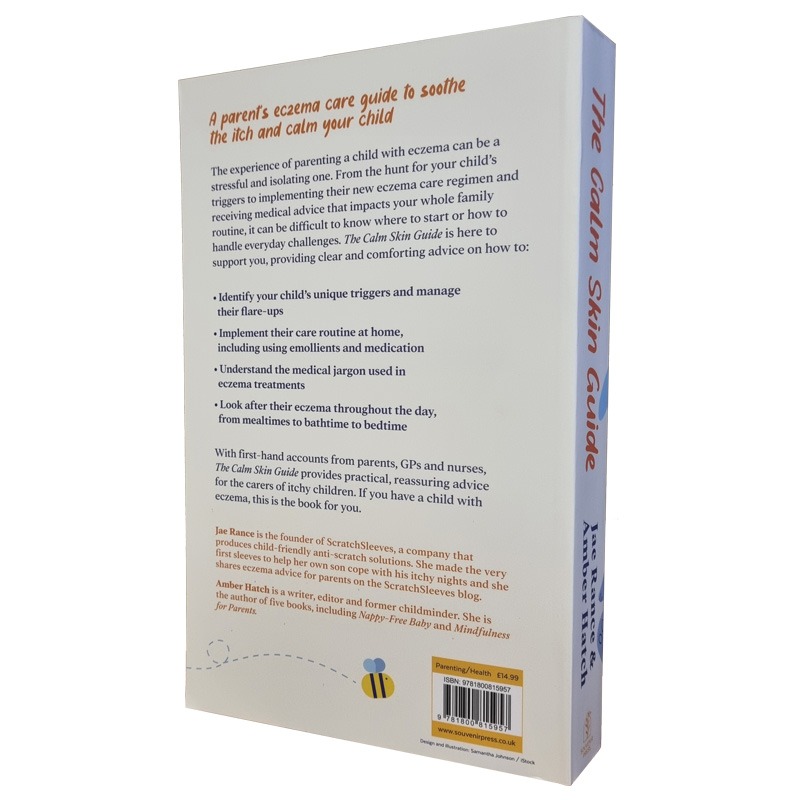All about infant contact dermatitis

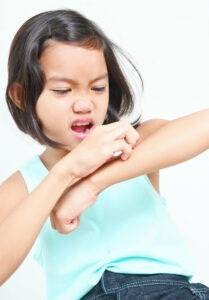

There are a number of different types of eczema and it’s entirely possible for child to suffer from more than one type at the same time. In this article we look at contact dermatitis. This type of eczema is caused by the skin reacting to irritants that the skin comes into direct contact with.
The facts about infant contact dermatitis
If you have a baby, toddler or small child with contact dermatitis, you’ll understand just how heart-breaking it can be to watch them suffer. So, by gaining an understanding of how the condition is triggered and the various treatment options available, this can hopefully help to lessen the severity of the distress caused.
Contact dermatitis, or contact eczema, is a red, itchy rash that develops due to contact with irritants or allergens in the environment that surrounds us. This uncomfortable skin condition comes in many forms. The three most common types are irritant contact dermatitis, allergic contact dermatitis and contact urticaria, also known as hives. The irritant form of eczema develops quickly due to direct contact with substances that irritate or inflame the skin. The allergic form develops over 48 to 96 hours once the sufferer has become sensitised to a specific environmental irritant or allergen. It is, unfortunately, possible to suffer from the misery of both forms at the same time.
Contact urticaria is a less common type of contact dermatitis. Swelling and redness usually occur immediately after the skin comes into contact with an irritant, and doesn’t normally last long.
“1 in every 5 children in the UK is affected by eczema at some stage.”
British Skin Foundation
Understanding irritant contact dermatitis
The most common form of contact dermatitis is irritant contact dermatitis. This develops quickly when the skin comes into contact with an irritant. Inflammation is caused by substances breaking through the skin barrier, with symptoms usually appearing within 48 hours. Strong irritants are the ones that will cause an immediate reaction. Problems caused by milder irritants, like soap and detergents, are less obvious. You may notice them following frequent and repeated contact over time. The immune system ‘remembers’ the irritant and develops an itchy response. You’ll find that only the area of skin that has come into direct contact with the irritant will be affected.
Common irritants
There are so many potential triggers for contact dermatitis that it can often be tricky to determine the exact cause. Finding the guilty substance maybe a time-consuming process of elimination.
Common irritants can include detergents, soaps, household cleaning products, cold wind and even raw food. The most common sites for irritation are between the fingers and on the back of hands, the face – where the use of toiletries and highly perfumed products is a factor, and on the body, often through friction from clothes. The nightshade family of foods such as raw tomatoes and potatoes, the sting of cold wind and even concrete dust can also cause irritation.
Children and babies with a history of atopic diseases like eczema, asthma or hay fever, have an increased risk of developing irritant contact dermatitis, with the effects often getting worse as time goes by.
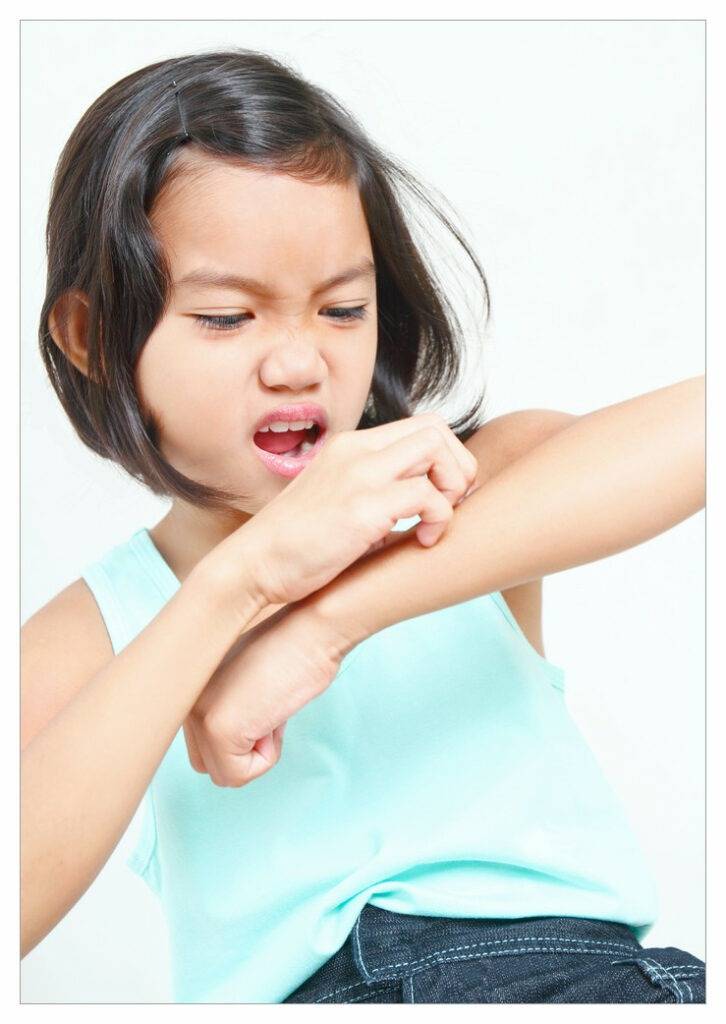
Allergic Contact Dermatitis explained
The second most common type of contact dermatitis, allergic contact dermatitis can take up to 96 hours to show up once the body’s defence mechanism has recognised an allergen. As mentioned previously, the skin reaction will usually only be in the area which came into contact with the allergen. The first time the skin comes into contact with a new allergen, it is analysed by the immune system and stored in its memory. At this stage, there is no reaction. It’s only when that substance comes into contact with the skin once again that an itchy red rash will appear. The allergy can be remembered by the body for potentially many years. So, because this sensitisation takes time to build up, allergic contact dermatitis is much less common in babies and toddlers. If you’re worried, patch testing is available to confirm a diagnosis.
What are the most common sensitisers/allergens?
There are an array of potential triggers for contact dermatitis to watch out for. Here are just a few of the most common ones:
- Antibacterial ointments. Used frequently to treat childhood scrapes and scratches, these preparations can sometimes cause an allergic reaction.
- Perfumes. This is often the culprit if your baby seems to be ‘allergic’ to a particular relative.
- Preservatives/biocides. Typically parabens and MI/MCI which are used to extend the shelf-life of toiletries.
- Nail varnish hardeners. You might want to ditch the nail polish when handling a baby or young child with eczema.
- Paraphenylenediamine. Usually found in hair dyes, this could be the culprit if your baby’s skin seems to react to a particular person.
- Citrus fruits, especially the peel.
- Plants. Be wary around Christmas trees, as pine is a common allergen. Sunflowers, chrysanthemums, daffodils, tulips and primulas are also to be avoided.
- A number of topical medicines (creams), including hydrocortisone and antibiotic creams.
- Strong adhesives, such as epoxy resins. However, this is not usually a problem thanks to child-friendly glues like PVA and Pritt.
The difference between contact dermatitis and atopic dermatitis
Contact dermatitis comes in two forms: irritant and allergic. As the allergic form is due to long-term sensitisation, the irritant form is more common in young children.
Atopic dermatitis is inherited and usually first occurs in infancy, whereas contact dermatitis is caused by the skin coming into contact with something that causes an allergic reaction or injures the skin. The good news is that more than half of infants who suffer from atopic dermatitis will grow out of the condition by school age, although flare-ups may still occur later in life.
A recent study by the American Academy of Dermatology found that 502 atopic dermatitis patients under the age of 18 who were patch tested, had more positive reactions to ingredients in personal care products, topical steroids and antibiotics.
Something to bear in mind when attempting to navigate the plethora of irritants that are out there.
What treatment is available for contact dermatitis?
Whilst the best course of action is to try and avoid the problem-causing substance in the first place, it is possible that a contact dermatitis rash could heal on its own within a few weeks once the irritant or allergen has been removed. However, if your child is suffering from discomfort, your doctor will be able to prescribe hydrocortisone cream (check the ingredients for potential irritants) to calm the inflammation and stop the annoying itch much more quickly. Antihistamines may also be used, along with emollients to keep the skin hydrated and protect it from irritants.
Things to try at home include, washing your baby or child’s skin as soon as possible after contact with an irritant or allergen, and using a cold, wet cloth as a compress on the skin to reduce symptoms and ease inflammation.
Keeping a record of contact dermatitis flare-ups and products used before it happened can be helpful. Always read labels to identify common irritants, so that you can remove them from your home.
Is natural relief for contact dermatitis an option?
While natural and alternative remedies may not cure eczema, they may be able to provide relief by managing symptoms and preventing flare-ups. Perceived risks about long-term treatment with conventional medicines such as topical corticosteroids may be a factor in pursuing a more natural treatment and prevention path.
Some ideas for natural alternatives to try include:
- Dietary changes. Eczema is an inflammatory condition, and for this reason, it may be worth making a few dietary changes to include anti-inflammatory foods such as fish, leafy greens, colourful fruits, and beans and lentils. Eliminating inflammatory foods such as dairy, eggs and wheat may also help.
- Apple cider vinegar. Because people with eczema may have less acidic skin than others, applying diluted apple cider vinegar could help to balance acidity levels and provide relief.
- Oatmeal. Colloidal oatmeal is reported to have antioxidant and anti-inflammatory properties, helping to reduce skin dryness, scaling and itchiness. Prepare a warm bath and add powdered colloidal oatmeal for a good soak.
- Tea tree oil. With antibacterial, anti-inflammatory and wound-healing properties, tea tree is used to help relieve skin dryness and prevent infections.
- Honey. As a natural antibacterial and anti-inflammatory agent, honey has been used to heal wounds for centuries. It’s also thought to boost the immune system, therefore helping to fight infection.
- Aloe vera. Antibacterial and wound-healing, aloe can help prevent infection and soothe broken skin.
As well as sharing our experience of bringing up an eczema child (and favourite allergy-friendly recipes), ScratchSleeves also manufacture and sell our unique stay-on scratch mitts and PJs for itchy babies, toddlers and children. We now stock sizes from 0-adult in a range of colours. Visit our webshop for more information.
The Calm Skin Guide
Love our blog? It's also available in book format with:
- First hand accounts from parents & medical professionals
- Easy navigation
- Comprehensive index
- Additional material
Signed copies available at no extra cost
Écrit par :
Révisé par :
Un article intéressant ? Ne le gardez pas pour vous...
Read next...
Vous pouvez également trouver utile...
Achat rapide


Remise sur les achats multiples

Dépensez entre 30 et 60 euros et économisez 5%.
Économisez 10 % sur les achats effectués entre 60 et 120 €.
Au-delà de 120 €, économisez 15 %.
Discount automatically applied at checkout
Garantie sans équivoque

ScratchSleeves offre une garantie sans faille.
Frais de port gratuits au Royaume-Uni

Free packing and postage on all UK orders. For overseas orders to Europe postage is from £3.50, to USA is £6.50 and to the rest of the world, from £3.75.

